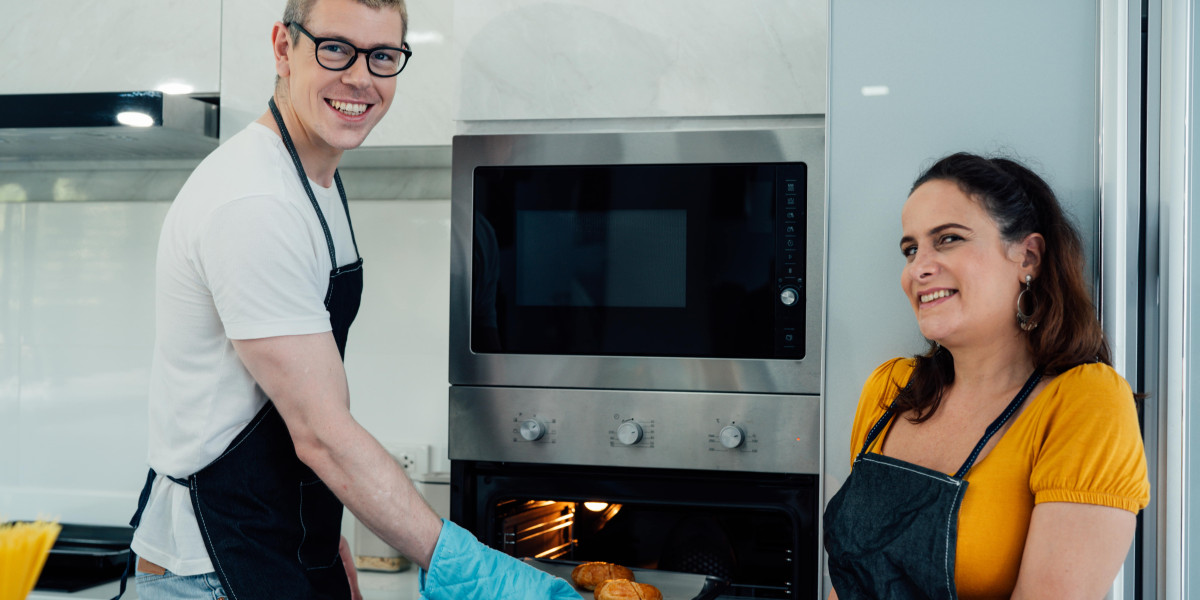The Comprehensive Guide to Built-In Ovens: A Modern Kitchen Essential
Built-in ovens have ended up being a staple in modern kitchens, integrating visual appeals, performance, and area effectiveness into a single device. As property owners make every effort for both usefulness and design, comprehending the features, benefits, and considerations of built-in ovens can considerably enhance the cooking experience. This post delves into what built-in ovens are, their diverse types, setup considerations, and FAQs to assist customers make notified decisions.
What is a Built-In Oven?
A built-in oven is a kitchen home appliance created to be integrated into cabinetry, creating a streamlined, cohesive appearance for the kitchen. Unlike freestanding ovens, which inhabit additional flooring area, built-in ovens are enclosed within wall systems or kitchen with built in oven cabinetry. They are available in different configurations and sizes, enabling for personalized services that cater to the requirements of diverse homes.

Kinds Of Built-In Ovens
built in cookers electric-in ovens can be classified into different types based on their functions and cooking approaches. Here are some of the most typical types:
Single Built-In Ovens
- Best for small kitchen areas and homes with modest cooking needs.
- Generally have one main cooking compartment, developing a compact footprint.
Double Built-In Ovens
- Ideal for passionate cooks and bigger households.
- Features 2 separate cooking compartments for versatile meal preparation.
Wall Ovens
- Set up at eye level for simple gain access to.
- These ovens typically include convection innovation for even cooking results.
Steam Ovens
- Usage steam to cook food, protecting moisture and nutrients.
- Great for health-conscious individuals.
Combination Ovens
- Combine microwave and standard oven performances.
- Offer versatility for quick meals and conventional baking.
Italian or European Style Ovens
- Typically designed with special looks and advanced cooking innovations.
- Popular for high-end kitchen designs.
Advantages of Built-In Ovens
Built-in ovens provide a range of advantages that appeal to contemporary homeowners looking for both functionality and looks. A few of these benefits include:
- Space Efficiency: Built-in ovens conserve important counter space, which is especially helpful in smaller sized cooking areas.
- Boosted Aesthetics: With a custom-made appearance, built-in ovens improve the total style of the kitchen while providing a seamless combination with cabinetry.
- Flexible Cooking Capacity: Available in various sizes, these ovens cater to the cooking needs of various homes, from single occupants to large families.
- Availability: The setup at eye level makes built-in ovens simpler to gain access to, decreasing the risk of spills or injuries when positioning or getting rid of hot meals.
- Lower Energy Consumption: Many built-in ovens featured energy-efficient modes that help in reducing electric intake gradually.
Setup Considerations
Setting up a built-in oven needs careful preparation and consideration. Here are some aspects to bear in mind:
- Dimensions: Before purchasing a built-in oven, measure the area available to guarantee a correct fit. Built-in ovens been available in particular basic sizes, so it is essential to choose the best one.
- Ventilation: Adequate ventilation is needed for effective operation. Guarantee there is an appropriate exhaust system that adheres to local building codes to prevent getting too hot.
- Electrical Requirements: Built-in ovens may require specific electric built in ovens uk outlets or circuitry. Speak with a certified electrical contractor to ensure that the setup complies with security requirements.
- Expert Installation: Although some house owners go with DIY installation, working with a specialist can help make sure security and right setup for optimal performance.
Maintenance Tips for Built-In Ovens
Keeping your built-in oven not just lengthens its life-span however likewise guarantees effective operation. Here are some important maintenance tips:
Regular Cleaning:
- Wipe down interior surface areas after each usage to prevent accumulation.
- Use vinegar and baking soda for non-toxic cleaning.
Check Seals:
- Inspect the door seals to prevent heat loss.
- Change damaged seals quickly.
Test Thermostat:
- Periodically examine the temperature precision with an oven thermometer. Change settings as required.
Service Annually:
- Schedule expert upkeep once a year to check electrical components and ensure safe operation.
| Maintenance Task | Frequency | Function |
|---|---|---|
| Clean interior | After each use | Avoid accumulation and smells |
| Examine seals | Regular monthly | Ensure no heat gets away |
| Test thermostat | Every 6 months | Examine temperature level accuracy |
| Professional service | Each year | Guarantee ideal efficiency |
FAQs About Built-In Ovens
1. Do built-in ovens can be found in different sizes?Yes, Beko 99L Built-In Double Oven - Stainless Steel ovens are available in various sizes to fit different kitchen setups and culinary requirements. It is important to measure the offered area before buying. 2. Can built-in ovens be utilized as regular ovens?Absolutely. Built-in ovens function like regular ovens,
permitting you to bake, broil, and cook a range of meals. 3. Are built-in ovens energy-efficient? Numerous built-in ovens featured energy-saving features and are developed to utilize less
electrical power than freestanding models. 4. The length of time does installation take?Installation time can differ based on complexity however usually ranges from 1 to 3 hours. It is recommended to employ an expert for optimum results. 5. What is the life expectancy of a built-in oven?With correct maintenance, built-in ovens can last anywhere from 10 to 15 years or longer.
Built-in ovens provide a multitude of benefits for modern homes, combining benefit, energy efficiency, and elegant style into one solution.
When picking and setting up a built-in oven, it's essential to think about the type that best fits your cooking routines, readily available space, and aesthetic choices. By understanding the advantages, setup requirements, and upkeep needed, homeowners can elevate their culinary experience and create sensational kitchens that impress both family and guests alike. Buying a built-in oven can be a helpful addition that enhances cooking, improves home value, and savors cooking thrills for years to come.








